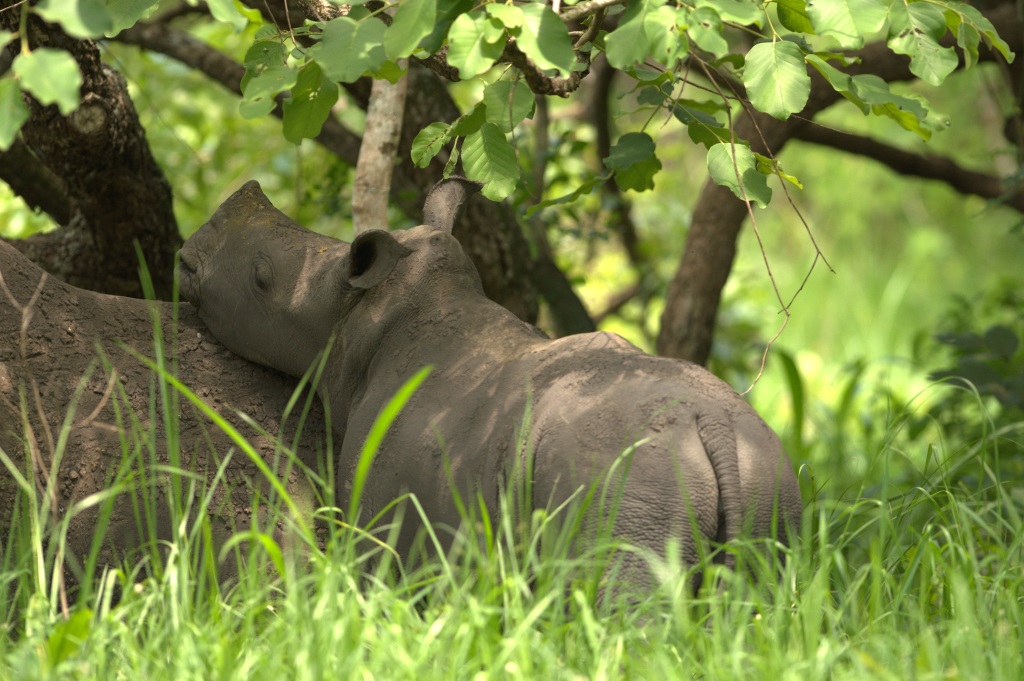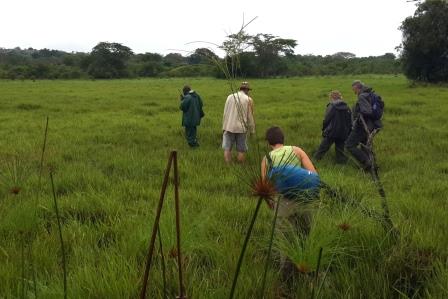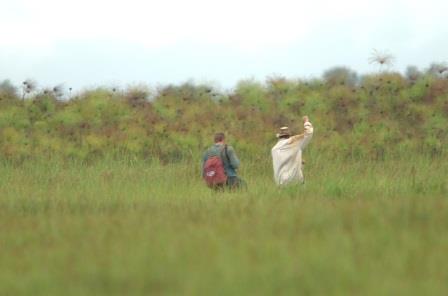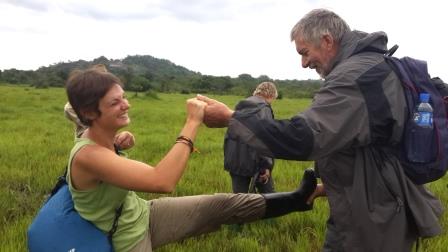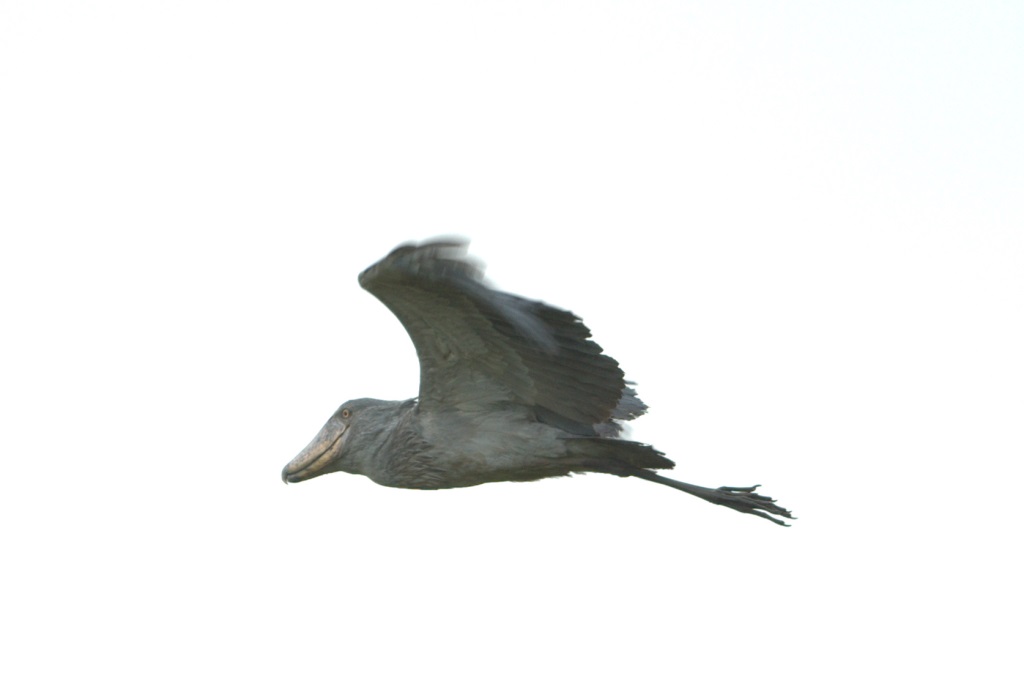Leaving Queen Elizabeth National Park behind us, we came across the Ziwa Rhino Sanctuary on the Masindi – Kampala road.
Circumstance had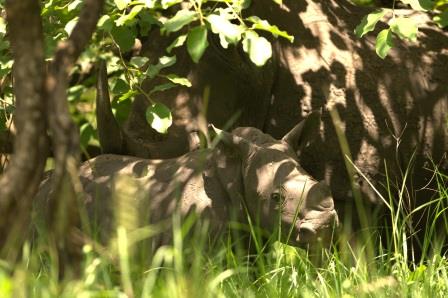 led us to the Sanctuary and we were very surprised to find ourselves going on a guided rhino tour. Admittedly, the idea of a joining a group of foreign tourists and tracking rhino was (to say the least) strange, but still we did it.
led us to the Sanctuary and we were very surprised to find ourselves going on a guided rhino tour. Admittedly, the idea of a joining a group of foreign tourists and tracking rhino was (to say the least) strange, but still we did it.
Despite it being very touristy, we really enjoyed ourselves. The experience of watching a very large and fearsome white rhino dozing in the shade, while her calf plays around her in the bushes, is quite spectacular.
Shortly after, we found ourselves back at the headquarters, where we discovered that the Sanctuary also offers Shoebill tracking. Having failed so miserably in Ishasha, we decided to give these prehistoric looking birds another chance.
One unanimous decision later, we found ourselves camping in the Rhino Sanctuary, with a bonfire to keep us warm, delicious dessert to maintain our high spirits and endless discussion on whether we would or would not see the Shoebill the next day.
Knowing we would be tracking through the swamps at an ungodly hour of the morning, we made sure to get up early enough to get some hot tea and breakfast first. This sounds OK in theory, if you don’t consider the fact that when the alarm went at 5 in the morning it was cold, dark and raining. If anyone has ever camped in the rain, then you understand the reluctance to leave the warm, cozy and especially dry interior of your tent for the miserable world outside of it.
However, we were doing it for a good cause and so we got up, grumbled a bit, had our coffee and breakfast and went off to track a bird.
All of us packed into the car, we were driven along the muddy and extremely slippery roads to the swamp. Taking the first few steps in our borrowed gumboots we felt quite good about the whole experience. The rain had stopped, it looked like the clouds were thinning and the swamp didn’t look too bad.
Unfortunately our hopes weren’t too last. We soon found out that the Shoebill is so difficult to find because it spends it time catching it’s food in the nastiest section of the swamps and thus, if we wanted to see it, we had to go into these nasty areas as well.
Pretty soon we realized that the gumboots were only there to make us feel better and not for any practical purpose. By stepping onto what we thought was a patch of dry grass, we soon sank to below the knees into some very unsavoury looking (and feeling) water. Then, thanks to our gumboots, we had no way of getting rid of said unsavoury water… Oh well.
Luckily for us, Annemarie soon spotted our reason for being in the swamp. Our first Shoebill was sighted!
Our first glimpse was quite far away, so deciding to get closer, we ”crept” (i.e. sloshed) our way to a clump of bushes and soon had a great view of what turned out to be a particularly evil-looking bird.
A shoebill has a wicked hook at the end of its large beak; bright, beady yellow eyes; an overall rather scruffy and dirty appearance and to top it all, a set of eyebrows that give it a permanently scowling expression.
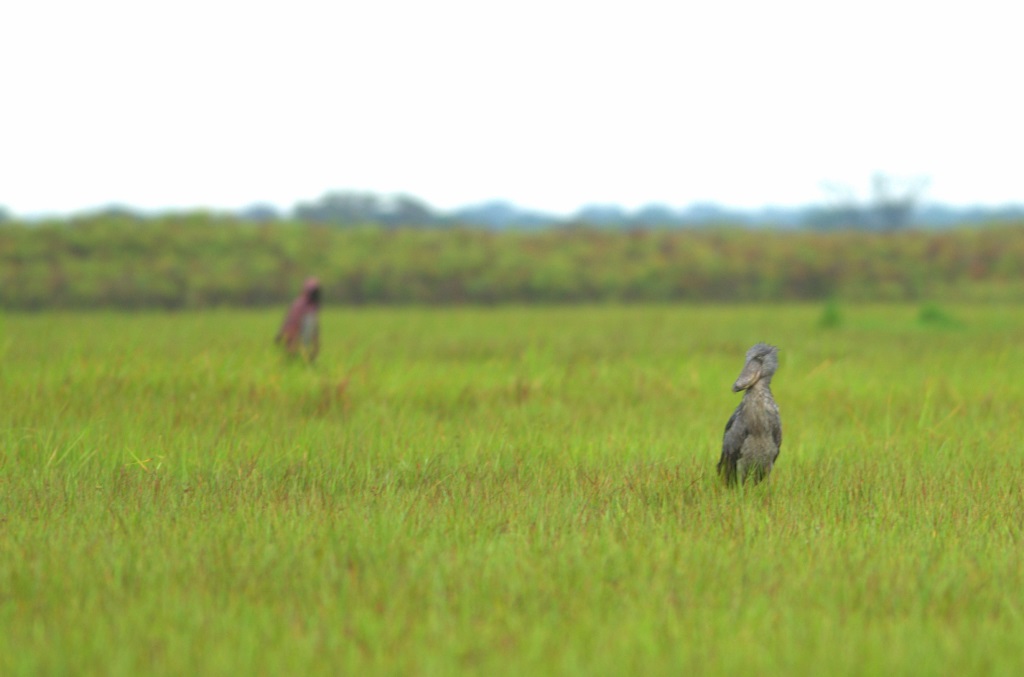 We didn’t care though. To be able to view in its own environment one of Africa’s most enigmatic, elusive and above all, rare birds was something that made up for any amount of hardship or discomfort.
We didn’t care though. To be able to view in its own environment one of Africa’s most enigmatic, elusive and above all, rare birds was something that made up for any amount of hardship or discomfort.
Bubbling over with the experience we were on our way back to the car, when Annemarie again proved to have the sharpest eyesight.
We had almost missed a second Shoebill quietly sitting off on the far side of the papyrus. Again we crept closer to the bird and hunkered down in the floating vegetation to attempt to get a few good shots.
Now completely over the moon with our double success, we really did head back to the car, keeping an eye or two open in case there was another Shoebill lurking in the bushes.



